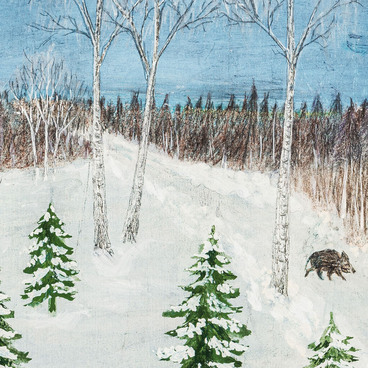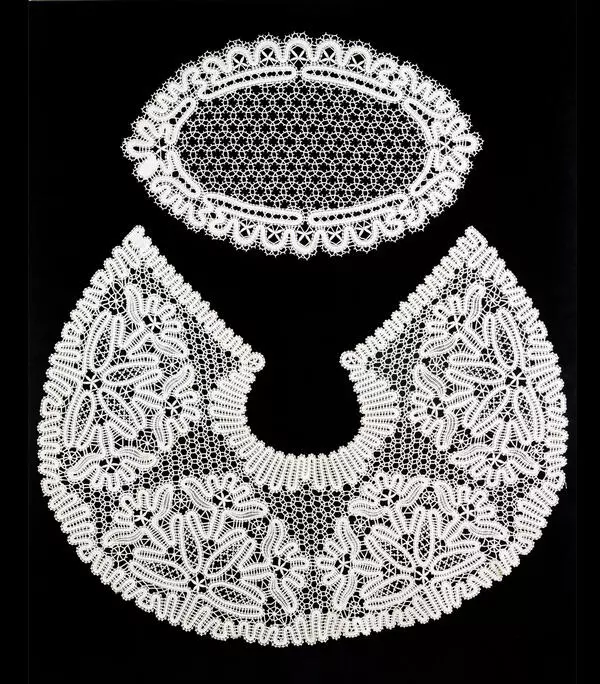Bobbins are small wooden spools with a handle on which threads are wound for weaving lace. They are usually made from smooth birch, maple or apple wood, but plastic bobbins are produced nowadays.
At the beginning of the work, the craftswoman winds the threads tightly on the bobbins and joins them in pairs. Some patterns require at least a hundred bobbins. Then the craftswoman fixes the mould with pins on a special roller — a tightly stuffed round pillow. This is the name of a leather or cardboard stencil of the future lace, on which punctured points mark the places for fixing. Most often, the moulds for amateur lace makers are prepared by artists.
The weaving pattern is created by interlacing — twisting and switching the threads in each pair and the threads of two pairs in the desired order. Each iteration is done with both hands at the same time. To simplify the work, the craftswoman places a bobbin lace holder — a special wooden stand with belts under the pillow with bobbins.
The museum collection houses pelerines made by Lyubov Vereshchagina in accordance with her own design. She develops moulds on her own, using the characteristic features of the Vologda school of lace making — an endless, smoothly curving braid of the same width and thin patterned meshes filling the space.
Lyubov Vereshchagina made the ‘Firebird’ pelerine out of linen threads. Its pattern is minimalistic, based on the continuous movement of a thick gimp. The space of the pelerine is filled with the main pattern. Occasionally, it is complemented by small elements of the background mesh and wider and denser leaves.





